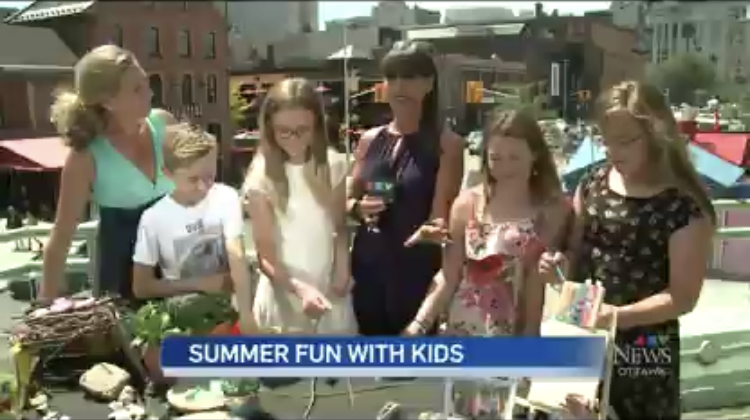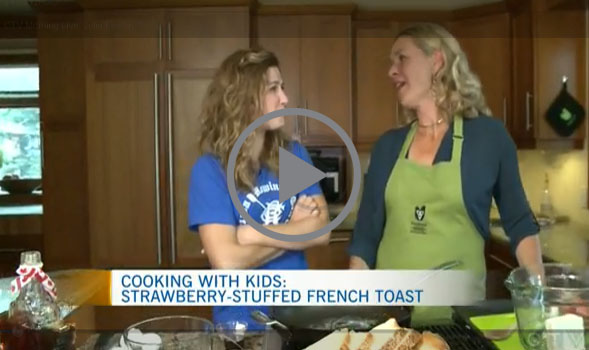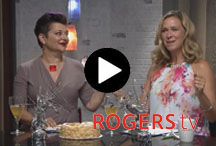 Pump up the music! Nothing makes the time pass more quickly and puts people in a cheerier mood than some upbeat tunes. Your kids will dance and sing their way to a tidier place. With younger children, you can play “wax museum,” where kids must freeze in place like a wax statue every time the music stops. This simple test of balance, coordination and reflexes can turn any task, whether it's picking up toys or tidying up the dinner table, into a giggle-filled game.
Pump up the music! Nothing makes the time pass more quickly and puts people in a cheerier mood than some upbeat tunes. Your kids will dance and sing their way to a tidier place. With younger children, you can play “wax museum,” where kids must freeze in place like a wax statue every time the music stops. This simple test of balance, coordination and reflexes can turn any task, whether it's picking up toys or tidying up the dinner table, into a giggle-filled game.
Go “skating” for dust bunnies: Let your kids slip and slide their way to cleaner hardwood floors. Have your children wear old pairs of socks and “skate” around the house collecting dust bunnies with their feet. See who can accumulate the largest dust bunny. Just make sure there are no sharp edges or breakable items close by with which kids can hurt themselves if they take a tumble. And be sure to collect all of your dust bunnies in a trash bag as you go along so they don't hop back onto the floor! Kids love this silly and energizing game that gets their hearts pumping and promotes agility and muscle fitness.
 “Wax on, wax off.” Show your young grasshopper how to clean windows, mirrors, and even the family car by employing Mr. Miyagi’s (from "The Karate Kid" movies) simple technique of moving the right hand in a circular, clockwise motion and the left hand in a circular, counterclockwise motion. It will test your child’s ability to follow directions, as well as improve coordination, stamina and upper body strength. It's important to use non-toxic and preferably “green” cleansers, especially when kids are helping out.
“Wax on, wax off.” Show your young grasshopper how to clean windows, mirrors, and even the family car by employing Mr. Miyagi’s (from "The Karate Kid" movies) simple technique of moving the right hand in a circular, clockwise motion and the left hand in a circular, counterclockwise motion. It will test your child’s ability to follow directions, as well as improve coordination, stamina and upper body strength. It's important to use non-toxic and preferably “green” cleansers, especially when kids are helping out.
Play expiration-date detective. Have your older child sleuth out old, unwanted items in your refrigerator and cupboard by showing him how to read expiration dates. Have him make a pile of all of the discarded items, then show him how to properly dispose of them by sorting them into three categories: Recycling, composting or trash. If you don’t already have separate containers for each of these, let your child create labels and laminate them for long-lasting use.
Shake, shake, shake! Unplug the toaster and lay paper grocery bags or an old cloth over the kitchen counter. Then let your child turn that toaster upside down and do a shake and shimmy dance to get all the crumbs out. Disposable wooden chopsticks are great for loosening stuck pieces, but be sure your child doesn’t use any metal utensils. It’s a safe practice to follow even when the toaster is not plugged in.
 Alphabetize the spice drawer. Your younger child will get a little reading and sorting practice while your spices get organized, making it quicker and easier to find what you need in a pinch. Encourage your child to familiarize herself with the spices by reading labels, smelling the spices and even tasting them. Explain how you commonly use them for cooking or baking.
Alphabetize the spice drawer. Your younger child will get a little reading and sorting practice while your spices get organized, making it quicker and easier to find what you need in a pinch. Encourage your child to familiarize herself with the spices by reading labels, smelling the spices and even tasting them. Explain how you commonly use them for cooking or baking.
Play “Follow the Leader.” Give each child an apron and tuck an old rag or towel and a squirt bottle filled with a non-toxic cleaning fluid into the pockets. The designated leader must walk through the house and make multiple stops to clean or put away an object and the rest of the group must follow suit. Switch leaders every five minutes.
Have a sock-matching race. Put an end to “sock widows” and lost socks once and for all. Toss all of the family’s clean socks onto your bed in a big pile and then race to see who can match the most pairs the fastest. Once you have all of the mates together, show your child how to roll them up into neat little balls. First, laying the socks flat in profile, one on top of the other, roll both toe ends up towards the open ends about 2/3 of the length of the entire sock. Take the open end of one of the socks and fold it down around the rolled portion. Voila! Now you've got pairs of socks that won’t get separated in your child’s drawers. Any socks left over without mates you can either donate or keep in a bin to use for arts and crafts projects or even as rag to do for some Spring cleaning!
 Put on a family fashion show. This silly activity is good for a few laughs and doubles as a way for everyone to purge outdated or ill-fitting clothes from the depths of their closet. No matter how you look, make sure to flaunt each outfit with modelesque attitude befitting of the catwalk. Ahead of time, agree that the majority vote determines whether the outfit (or certain parts of it) stays or goes. When you're all done, bring the discarded clothing to a consignment store or donate it to charity.
Put on a family fashion show. This silly activity is good for a few laughs and doubles as a way for everyone to purge outdated or ill-fitting clothes from the depths of their closet. No matter how you look, make sure to flaunt each outfit with modelesque attitude befitting of the catwalk. Ahead of time, agree that the majority vote determines whether the outfit (or certain parts of it) stays or goes. When you're all done, bring the discarded clothing to a consignment store or donate it to charity.
Play a sorting game. Organize toys, books and electronic games. When kids’ belongings have clearly designated storage spaces, children are more likely to put them away when they're done playing. Transparent, covered storage bins are great because they keep the dust out, they're stackable (and save space), they're portable – some even come with wheels! – and they allow your kids to see what’s inside without having to read labels. Ask your child to sort like toys with like toys – cars and trucks in one, dolls or action figures in another, etc. Books can be organized any number of ways, including by size, author, or subject matter. Ask your child to go through her personal library and select five books that she is willing to get rid of. But first, let your child play the role of a storyteller and have her read one or two of her favorite books to you. Set one or two more aside for bedtime reading that night. Once she is reminded of how many great stories she has, she should be amenable to letting go of some ones she may have outgrown or become tired of. DVDs, CDs, and computer games can be tackled next. Unwanted items can be donated to charity or sold to second-hand retailers.
Turn trash into art. The possibilities are endless! Transform all of those wire hangers you’ve collected from the dry cleaner into forms for decorative wreaths, turn old t-shirts into throw pillows, bottle caps into magnets, greeting cards into ornaments, and maps into wrapping paper. Let your family’s collective creative juices flow and see what sorts of new-fangled inventions and recycled gems you can conjure up.
Collect loose change. Send your child on a hunt to collect the loose change lying around the house! Have her search everywhere: on dressers, in pockets, between the sofa cushions, even underneath the seats in your car. Ask her to practice counting all of the different denominations of money and adding up the total. Take the money to a free coin counting machine (we use the one at St. Laurent Shopping Centre) and let your child buy a small treat with her new-found funds, or simply put the money in a jar and save it for a future family outing. If there's a big enough amount, consider opening a savings account for your child if she doesn’t already have one, and encourage her to make deposits on a regular basis. One way for your child to build up her savings is to save at least half of all monetary gifts she receives. Incidentally, the bank will probably ask you to put the change into coin roll wrappers before you deposit them — this is an added bonus for developing your child’s fine motor and counting skills!
Adapted from www.education.ca
 Friday, May 25, 2012 at 7:04AM
Friday, May 25, 2012 at 7:04AM  I am going to start this blog with my own big shout out to the many people who crowd the sidelines of the race every year to cheer, congratulate and encourage the thousands of runners who pass by. Thank you, thank you!
I am going to start this blog with my own big shout out to the many people who crowd the sidelines of the race every year to cheer, congratulate and encourage the thousands of runners who pass by. Thank you, thank you! 






































































